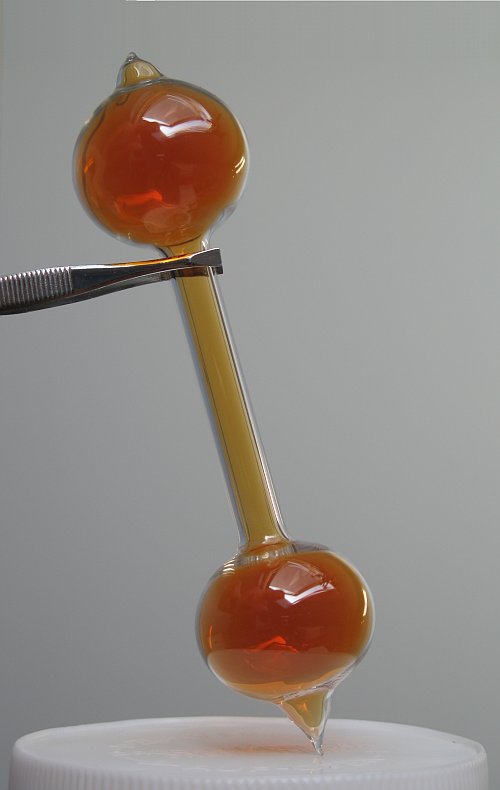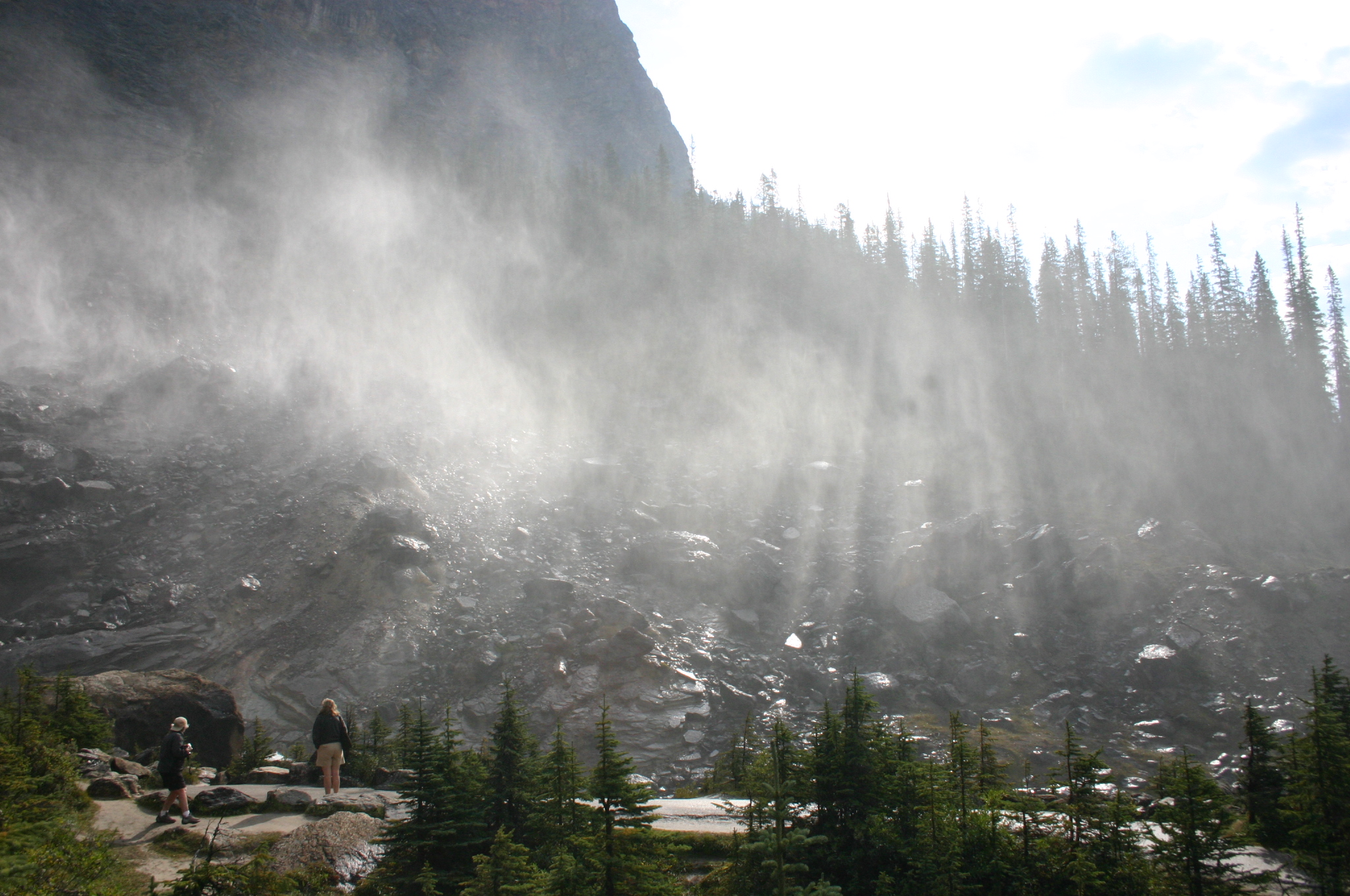vapour densities on:
[Wikipedia]
[Google]
[Amazon]
 In physics, a vapor (
In physics, a vapor (

 The
The
 *
*
 In physics, a vapor (
In physics, a vapor (American English
American English, sometimes called United States English or U.S. English, is the set of varieties of the English language native to the United States. English is the most widely spoken language in the United States and in most circumstances i ...
) or vapour (British English
British English (BrE, en-GB, or BE) is, according to Lexico, Oxford Dictionaries, "English language, English as used in Great Britain, as distinct from that used elsewhere". More narrowly, it can refer specifically to the English language in ...
and Canadian English; see spelling differences) is a substance in the gas
Gas is one of the four fundamental states of matter (the others being solid, liquid, and plasma).
A pure gas may be made up of individual atoms (e.g. a noble gas like neon), elemental molecules made from one type of atom (e.g. oxygen), or ...
phase at a temperature
Temperature is a physical quantity that expresses quantitatively the perceptions of hotness and coldness. Temperature is measurement, measured with a thermometer.
Thermometers are calibrated in various Conversion of units of temperature, temp ...
lower than its critical temperature,R. H. Petrucci, W. S. Harwood, and F. G. Herring, ''General Chemistry'', Prentice-Hall, 8th ed. 2002, p. 483–86. which means that the vapor can be condensed to a liquid by increasing the pressure
Pressure (symbol: ''p'' or ''P'') is the force applied perpendicular to the surface of an object per unit area over which that force is distributed. Gauge pressure (also spelled ''gage'' pressure)The preferred spelling varies by country and e ...
on it without reducing the temperature. A vapor is different from an aerosol. An aerosol is a suspension of tiny particles of liquid, solid, or both within a gas.
For example, water has a critical temperature of , which is the highest temperature at which liquid water can exist. In the atmosphere at ordinary temperatures gaseous water (known as water vapor
(99.9839 °C)
, -
, Boiling point
,
, -
, specific gas constant
, 461.5 J/( kg·K)
, -
, Heat of vaporization
, 2.27 MJ/kg
, -
, Heat capacity
, 1.864 kJ/(kg·K)
Water vapor, water vapour or aqueous vapor is the gaseous p ...
) will condense into a liquid if its partial pressure is increased sufficiently.
A vapor may co-exist with a liquid (or a solid). When this is true, the two phases will be in equilibrium, and the gas-partial pressure will be equal to the equilibrium vapor pressure
Vapor pressure (or vapour pressure in English-speaking countries other than the US; see spelling differences) or equilibrium vapor pressure is defined as the pressure exerted by a vapor in thermodynamic equilibrium with its condensed phas ...
of the liquid (or solid).
Properties
''Vapor'' refers to a gas phase at a temperature where the same substance can also exist in the liquid orsolid
Solid is one of the four fundamental states of matter (the others being liquid, gas, and plasma). The molecules in a solid are closely packed together and contain the least amount of kinetic energy. A solid is characterized by structural ...
state, below the critical temperature of the substance. (For example, water has a critical temperature of 374 °C (647 K), which is the highest temperature at which liquid water can exist.) If the vapor is in contact with a liquid or solid phase, the two phases will be in a state of equilibrium. The term ''gas'' refers to a compressible fluid phase. Fixed gases are gases for which no liquid or solid can form at the temperature of the gas, such as air at typical ambient temperatures. A liquid or solid does not have to boil to release a vapor.
Vapor is responsible for the familiar processes of cloud
In meteorology, a cloud is an aerosol consisting of a visible mass of miniature liquid droplets, frozen crystals, or other particles suspended in the atmosphere of a planetary body or similar space. Water or various other chemicals may ...
formation and condensation. It is commonly employed to carry out the physical processes of distillation
Distillation, or classical distillation, is the process of separating the components or substances from a liquid mixture by using selective boiling and condensation, usually inside an apparatus known as a still. Dry distillation is the heat ...
and headspace extraction from a liquid sample prior to gas chromatography.
The constituent molecule
A molecule is a group of two or more atoms held together by attractive forces known as chemical bonds; depending on context, the term may or may not include ions which satisfy this criterion. In quantum physics, organic chemistry, and bioche ...
s of a vapor possess vibrational, rotational, and translational motion. These motions are considered in the kinetic theory of gases.
Vapor pressure
 The
The vapor pressure
Vapor pressure (or vapour pressure in English-speaking countries other than the US; see spelling differences) or equilibrium vapor pressure is defined as the pressure exerted by a vapor in thermodynamic equilibrium with its condensed phas ...
is the equilibrium pressure from a liquid or a solid at a specific temperature. The equilibrium vapor pressure of a liquid or solid is not affected by the amount of contact with the liquid or solid interface.
The normal boiling point
The boiling point of a substance is the temperature at which the vapor pressure of a liquid equals the pressure surrounding the liquid and the liquid changes into a vapor.
The boiling point of a liquid varies depending upon the surrounding envir ...
of a liquid is the temperature
Temperature is a physical quantity that expresses quantitatively the perceptions of hotness and coldness. Temperature is measurement, measured with a thermometer.
Thermometers are calibrated in various Conversion of units of temperature, temp ...
at which the vapor pressure is equal to normal atmospheric pressure.
For two-phase systems (e.g., two liquid phases), the vapor pressure of the individual phases are equal. In the absence of stronger inter-species attractions between like-like or like-unlike molecules, the vapor pressure follows Raoult's law, which states that the partial pressure of each component is the product of the vapor pressure of the pure component and its mole fraction in the mixture. The total vapor pressure is the sum of the component partial pressures.
Examples
 *
* Perfume
Perfume (, ; french: parfum) is a mixture of fragrant essential oils or aroma compounds (fragrances), fixatives and solvents, usually in liquid form, used to give the human body, animals, food, objects, and living-spaces an agreeable scent. Th ...
s contain chemicals that vaporize at different temperatures and at different rate in scent accords, known as note
Note, notes, or NOTE may refer to:
Music and entertainment
* Musical note, a pitched sound (or a symbol for a sound) in music
* ''Notes'' (album), a 1987 album by Paul Bley and Paul Motian
* ''Notes'', a common (yet unofficial) shortened version ...
s.
* Atmospheric water vapor
(99.9839 °C)
, -
, Boiling point
,
, -
, specific gas constant
, 461.5 J/( kg·K)
, -
, Heat of vaporization
, 2.27 MJ/kg
, -
, Heat capacity
, 1.864 kJ/(kg·K)
Water vapor, water vapour or aqueous vapor is the gaseous p ...
is found near the earth's surface, and may condense into small liquid droplets and form meteorological phenomena, such as fog, mist, and haar.
* Mercury-vapor lamp
A mercury-vapor lamp is a gas-discharge lamp that uses an electric arc through vaporized mercury to produce light. The arc discharge is generally confined to a small fused quartz arc tube mounted within a larger soda lime or borosilicate gl ...
s and sodium vapor lamp
A sodium-vapor lamp is a gas-discharge lamp that uses sodium in an excited state to produce light at a characteristic wavelength near 589 nm.
Two varieties of such lamps exist: low pressure and high pressure. Low-pressure sodium lamps are ...
s produce light from atoms in excited states.
* Flammable liquid
A flammable liquid is a liquid which can be easily ignited in air at ambient temperatures, i.e. it has a flash point at or below nominal threshold temperatures defined by a number of national and international standards organisations.
The Occupat ...
s do not burn when ignited. It is the vapor cloud above the liquid that will burn if the vapor's concentration is between the lower flammable limit (LFL) and upper flammable limit (UFL), of the flammable liquid.
E-cigarettes
An electronic cigarette is an electronic device that simulates tobacco smoking. It consists of an atomizer, a power source such as a battery, and a container such as a cartridge or tank. Instead of smoke, the user inhales vapor. As such ...
produce aerosols, not vapors.
Measuring vapor
Since it is in the gas phase, the amount of vapor present is quantified by the partial pressure of the gas. Also, vapors obey thebarometric formula
The barometric formula, sometimes called the '' exponential atmosphere'' or ''isothermal atmosphere'', is a formula used to model how the pressure (or density) of the air changes with altitude. The pressure drops approximately by 11.3 pascals per ...
in a gravitational field, just as conventional atmospheric gases do.
See also
* * * * *References
{{Authority control Gases Pressure Chemical properties ca:Vapour fr:Vapeur gl:Vapour